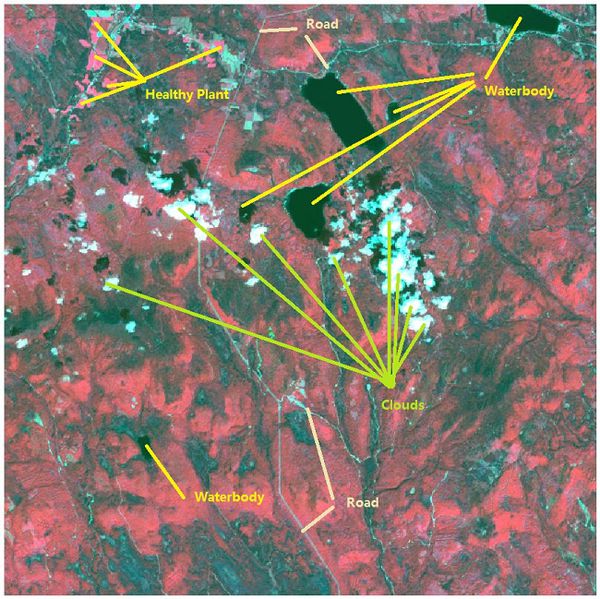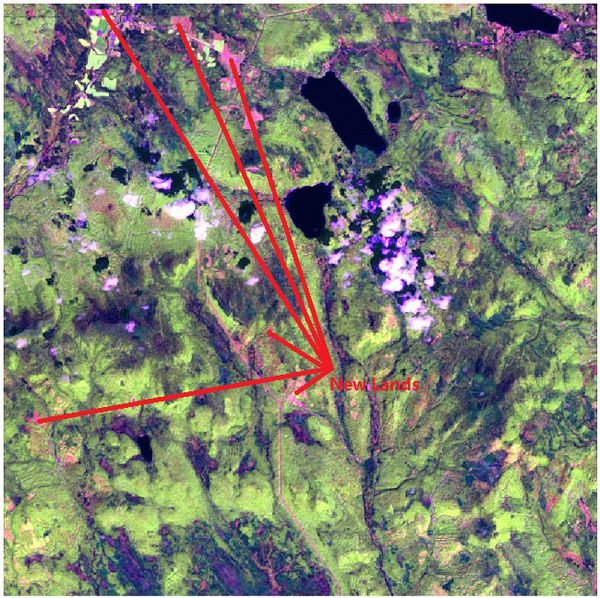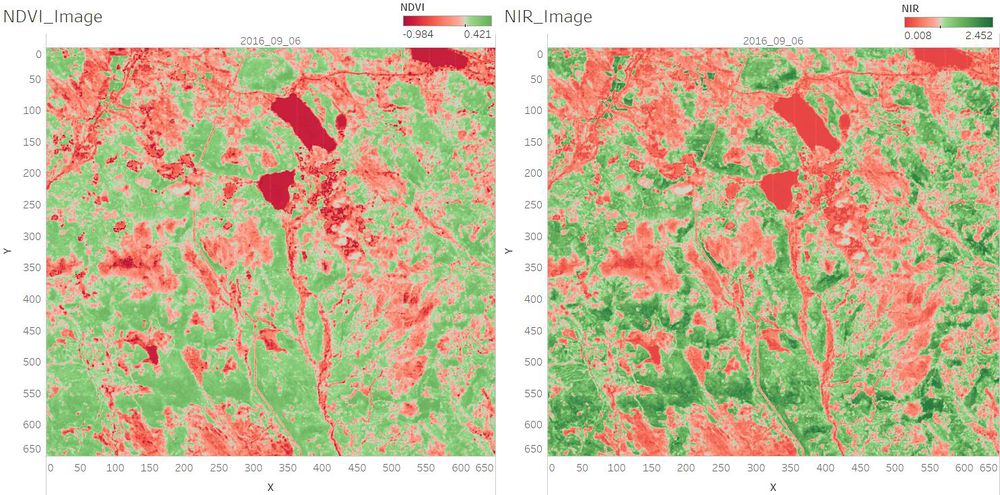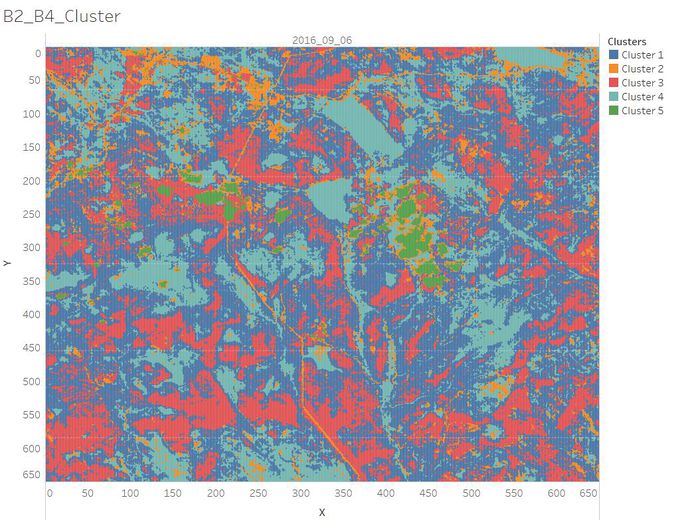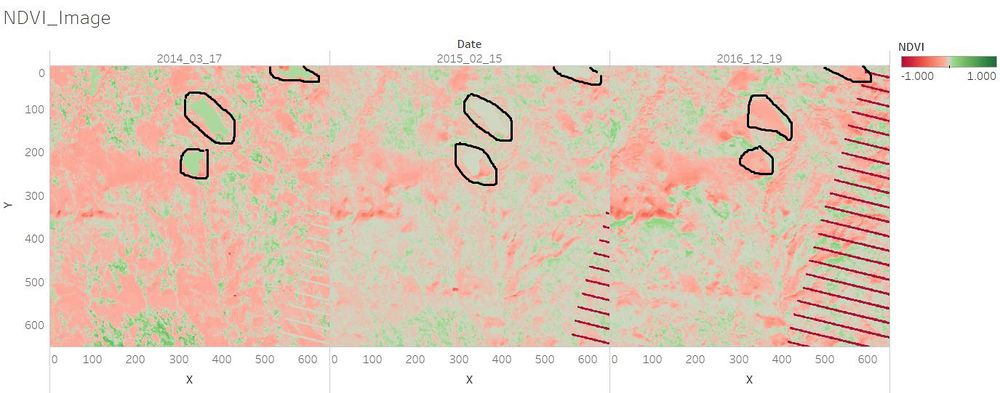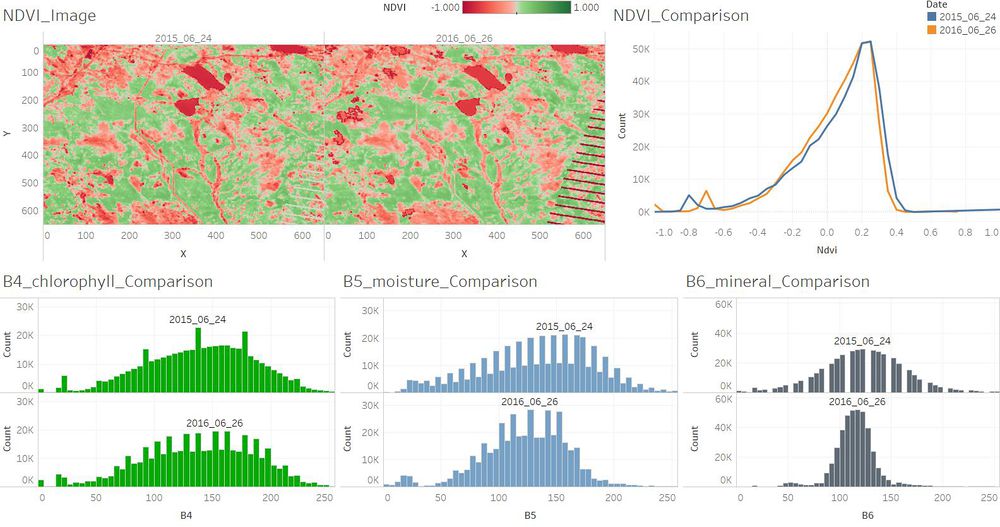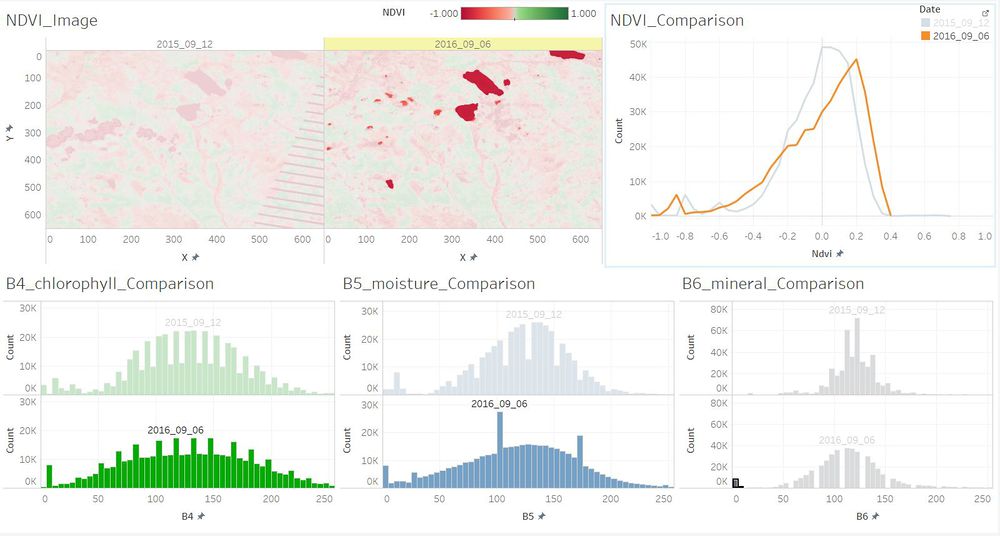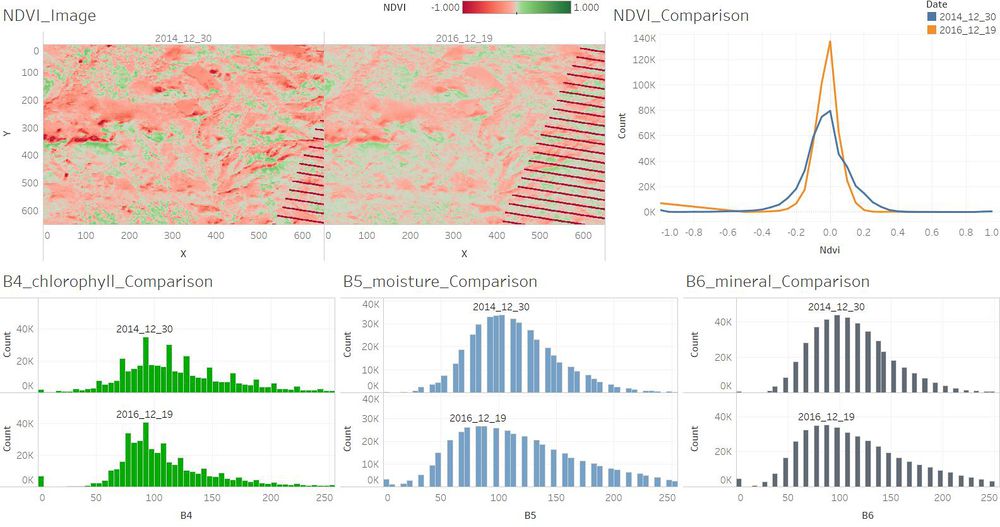Difference between revisions of "Mandi Assignment Final Answer"
| Line 79: | Line 79: | ||
<tr> | <tr> | ||
<td width=60% align='center'>[[File:Dec.jpg|1000px]] <br /></td> | <td width=60% align='center'>[[File:Dec.jpg|1000px]] <br /></td> | ||
| − | <td align='justify'></td> | + | <td align='justify'>The plants which are with higher chlorophyll content were a little bit more in December 2014 than in December 2016. There were not too much changes between December 2014 and December 2016.</td> |
</tr> | </tr> | ||
</table> | </table> | ||
Revision as of 00:41, 8 July 2017
Questions:
1. The scale and orientation of the supplied satellite images.
Identified the location and coordinates of the Boonsong Lake in the satellite image as below:
The orientation of the satellite image is the same with that of the Boonsong Lake.
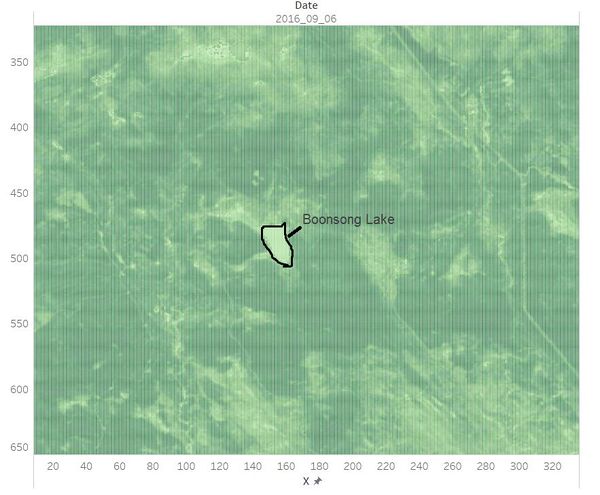
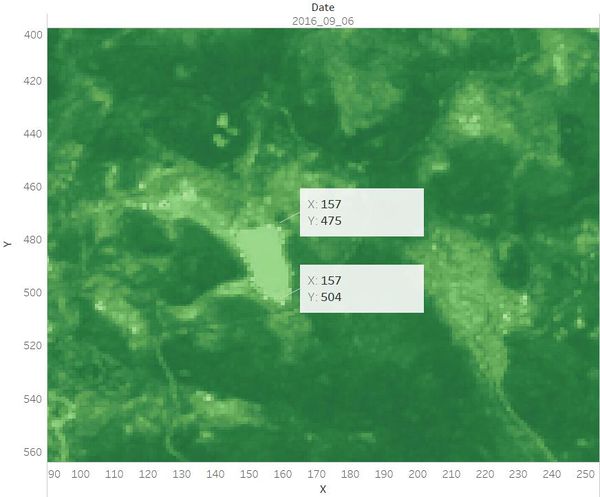
Hence, the length of a pixel is 3000/(504 - 475+1) ft, equals to 100 ft. Then the area of one pixel is 100 * 100 = 10000 square ft.
As the satellite image has 651*651 pixels, the actual scale of the region is 651*651*10000 square ft = 4,238,010,000 square ft.
The orientation of the satellite image is oriented north-south.
2. Features in the Preserve area as captured in the imagery.
Most of the images have sensor artifacts at the bottom right corner.
To identify the features in the Preserve Area, I picked the image which is generated from the data [image11_2016_09_06.csv]. It has no sensor artifacts at all.
3. Features that change over time in these images.
